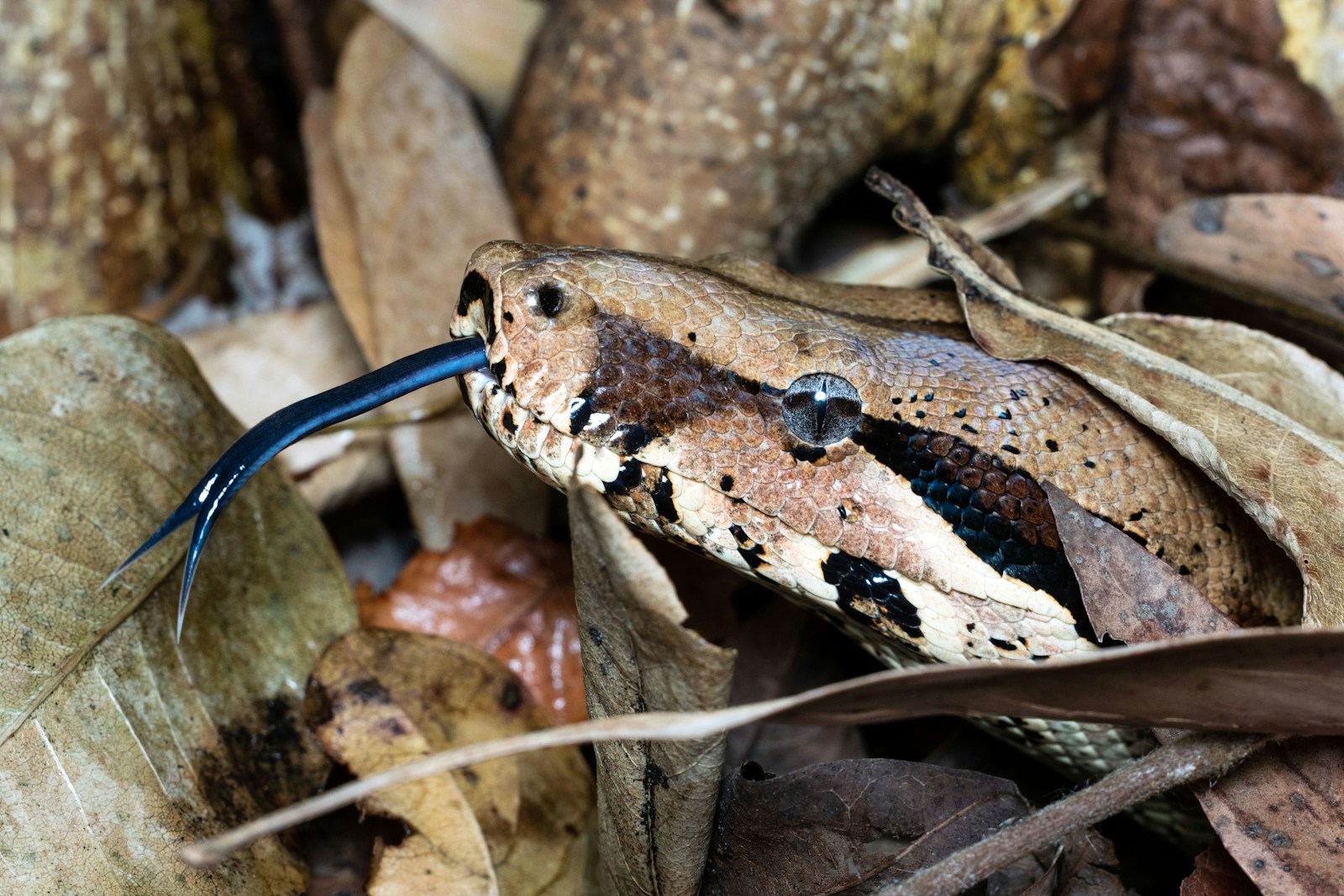In the shadowy undergrowth of forests and the tall grasses of savannas, a master of deception silently hunts. The death adder, a member of the Acanthophis genus, represents one of nature’s most remarkable examples of evolutionary trickery. Unlike many venomous snakes that advertise their deadly potential through dramatic displays or distinctive markings, death adders employ a different strategy altogether—they pretend to be harmless until the perfect moment strikes. Their patient ambush technique, coupled with lightning-fast strikes and potent venom, makes them particularly dangerous to unwary victims. This fascinating yet deadly reptile demonstrates how deception has become a refined survival strategy in the natural world, creating a predator whose innocuous appearance belies its lethal capabilities.
The Deceptive Appearance of Death Adders

Death adders possess a remarkable physical disguise that contributes significantly to their hunting success. With their stout bodies, broad heads, and relatively short length (typically 15-35 inches), they bear a striking resemblance to harmless pythons or other non-venomous snakes rather than their elapid relatives like cobras and mambas. Their scales often feature intricate patterns of browns, greys, reds, or blacks that blend perfectly with fallen leaves and forest detritus. Perhaps most deceptive is their tail, which they use as a clever lure—the tip often resembles a grub or worm that they wiggle to attract prey while keeping their lethal head hidden and ready to strike. This comprehensive disguise creates a fatal misidentification for both prey animals and occasionally humans who mistake them for non-threatening species.
Distribution and Natural Habitat
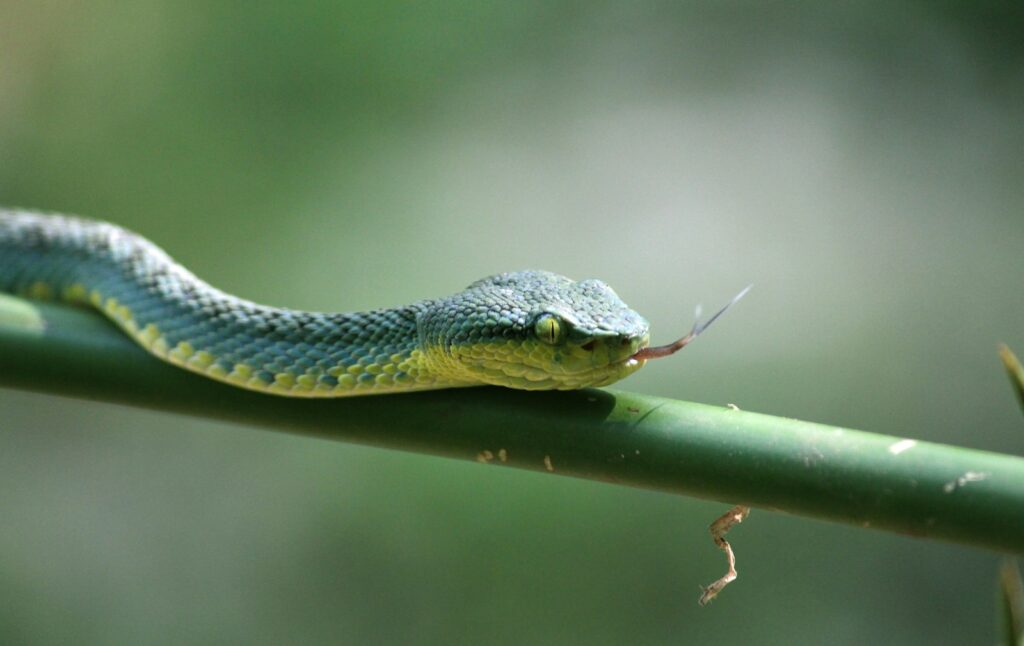
Death adders are primarily found throughout Australia, Papua New Guinea, and parts of the eastern Indonesian archipelago, making them a distinctly Australasian species. Within these regions, they’ve adapted to an impressive variety of habitats, from tropical forests and woodlands to arid deserts and coastal heaths. Different species within the Acanthophis genus have specialized in particular environmental niches—the common death adder (Acanthophis antarcticus) prefers eastern and southern Australia’s woodland areas, while the desert death adder (Acanthophis pyrrhus) has adapted to the harsh conditions of central Australia’s arid regions. Their distribution often overlaps with human settlements, particularly in rural and suburban areas where development encroaches on their natural habitat. This proximity to human activity, combined with their exceptional camouflage, contributes significantly to accidental encounters and potential envenomation cases.
The Deadly Ambush Strategy
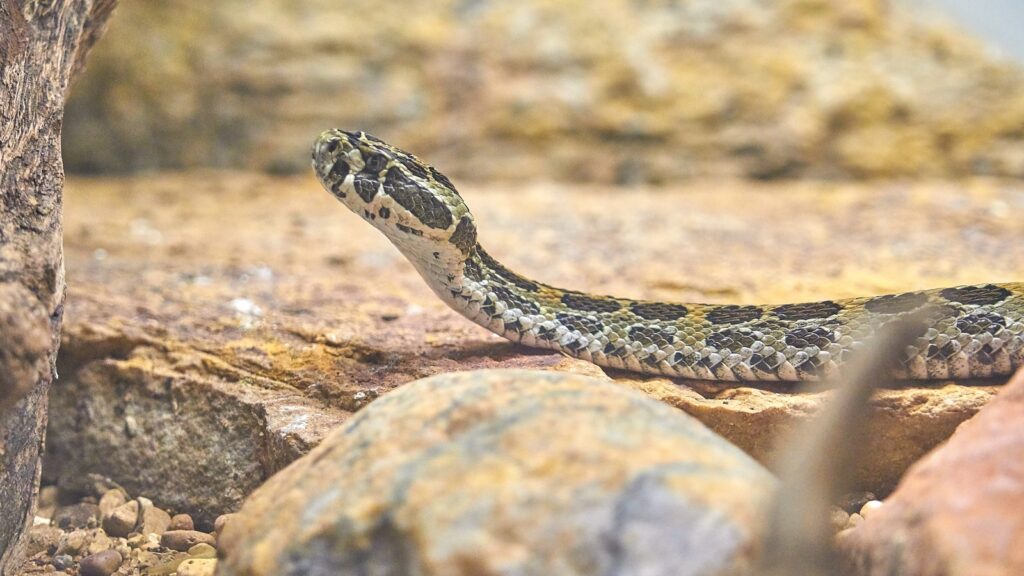
Unlike many venomous snakes that actively pursue prey, death adders have perfected the art of ambush predation to an extraordinary degree. They position themselves partially buried in leaf litter or sand, remaining completely motionless for days if necessary—a strategy that earned them the scientific name “Acanthophis,” meaning “thorn snake,” referencing their thorn-like appearance when coiled and waiting. The snake’s patience is remarkable, as it may lie in wait for extended periods until suitable prey approaches within striking distance. When prey comes near, the death adder employs its specialized tail-luring technique, wiggling just the tip in a manner mimicking a worm or insect to draw curious prey closer. Once the unsuspecting victim is within range—typically less than 15 centimeters—the snake strikes with lightning speed, delivering its venom and quickly retreating to safety. This entire process happens in a fraction of a second, giving the prey almost no opportunity to escape.
Record-Breaking Strike Speed
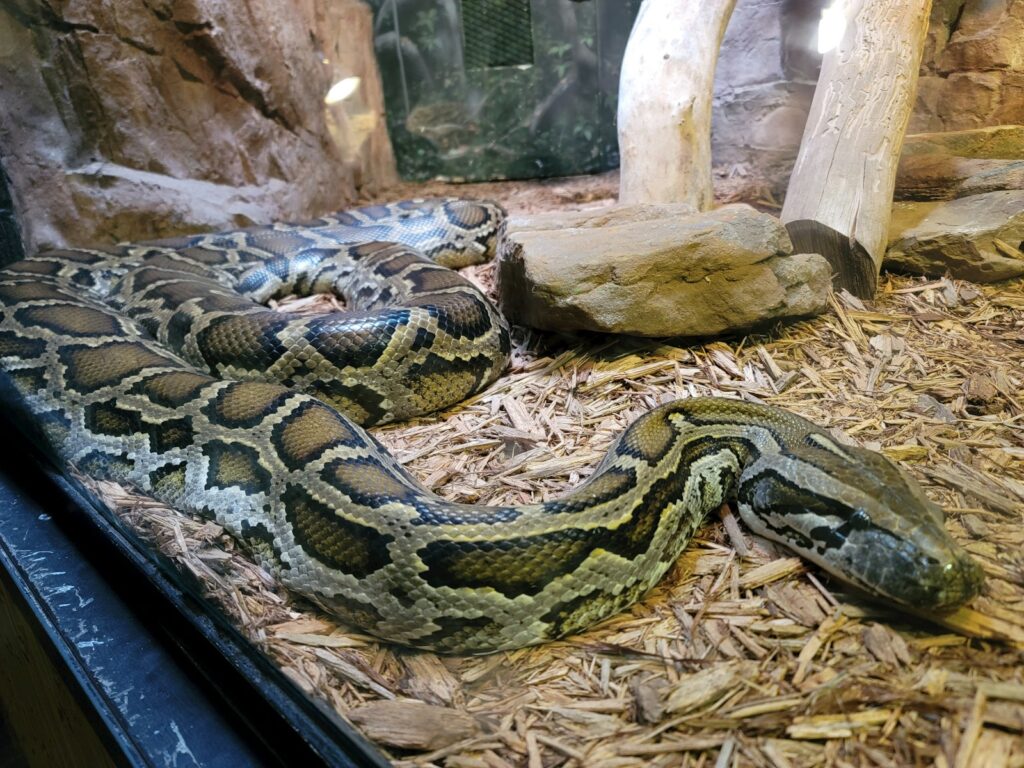
Death adders possess one of the fastest strike speeds in the snake kingdom, a critical adaptation that ensures hunting success despite their relatively slow overall movement. Scientific measurements have recorded their strikes at speeds of up to 3.5 meters per second (11.5 feet per second), making them among the quickest strikers of all venomous snakes. This exceptional speed allows them to connect with prey that would otherwise easily escape a slower predator. The biomechanics behind this remarkable ability involve specialized muscles that contract with extraordinary force, propelling the head forward while the body remains anchored. Their strike is not only fast but precisely controlled, enabling them to accurately deliver venom to vital areas. This combination of speed and accuracy makes the death adder’s strike virtually impossible for prey to evade once within range—a crucial advantage for a snake that relies on a single, decisive attack rather than pursuit.
The Potent Venom Cocktail
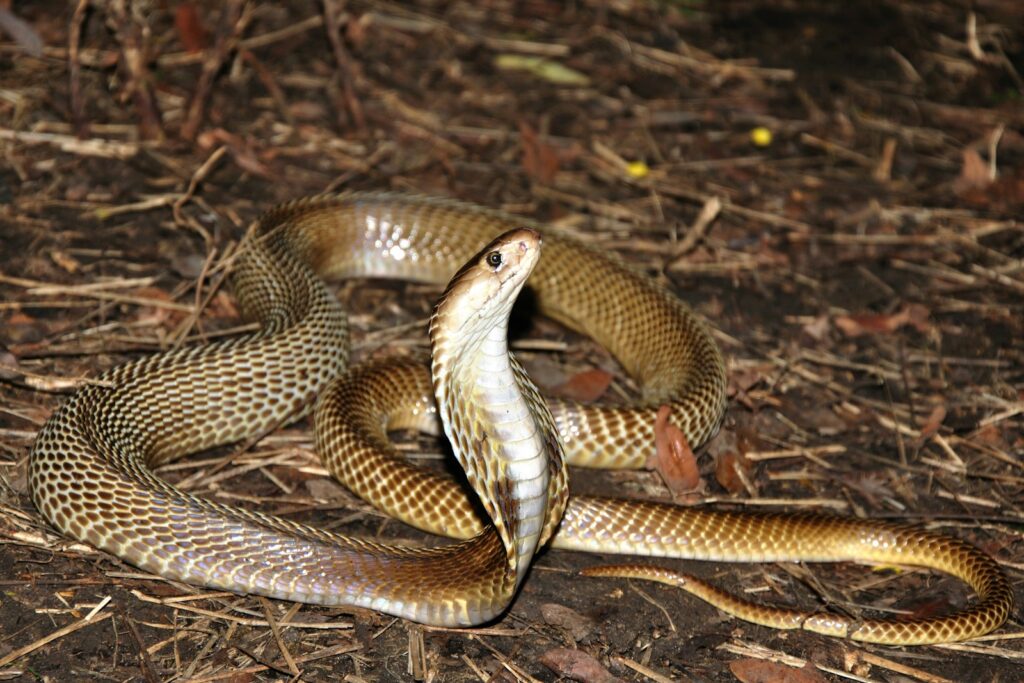
Death adder venom represents a sophisticated biochemical weapon that has evolved specifically to rapidly immobilize prey and deter potential threats. The venom contains a complex mixture of neurotoxins, myotoxins, and coagulants that work synergistically to shut down the victim’s nervous system. Particularly noteworthy are the postsynaptic neurotoxins that block acetylcholine receptors, preventing nerve signals from reaching muscles and resulting in progressive paralysis. This paralysis typically begins with the extremities and eventually affects the respiratory system, which can lead to death from respiratory failure without medical intervention. While the venom yield is relatively small compared to larger venomous snakes (typically 40-100mg), it is extremely potent—untreated mortality rates historically ranged from 50-60% before the development of effective antivenoms. The venom’s composition can vary somewhat between different death adder species, which presents additional challenges for treatment and antivenom production.
Species Diversity Within the Acanthophis Genus

The Acanthophis genus encompasses at least seven recognized species, though taxonomic debates continue regarding potential additional species and subspecies. The common death adder (Acanthophis antarcticus) is perhaps the most well-known, but the family includes several other remarkable members such as the desert death adder (A. pyrrhus), the northern death adder (A. praelongus), and the Pilbara death adder (A. wellsi). Each species has evolved subtle variations in appearance and behavior to suit their specific ecological niches. For instance, the desert death adder displays adaptations for arid environments, including lighter coloration and more efficient water conservation mechanisms. The New Guinea death adder (A. rugosus) has adapted to tropical forest environments with distinct color patterns that blend with the forest floor. These variations demonstrate the remarkable evolutionary adaptability of the genus across different habitats while maintaining their core deceptive hunting strategy.
Reproduction and Life Cycle
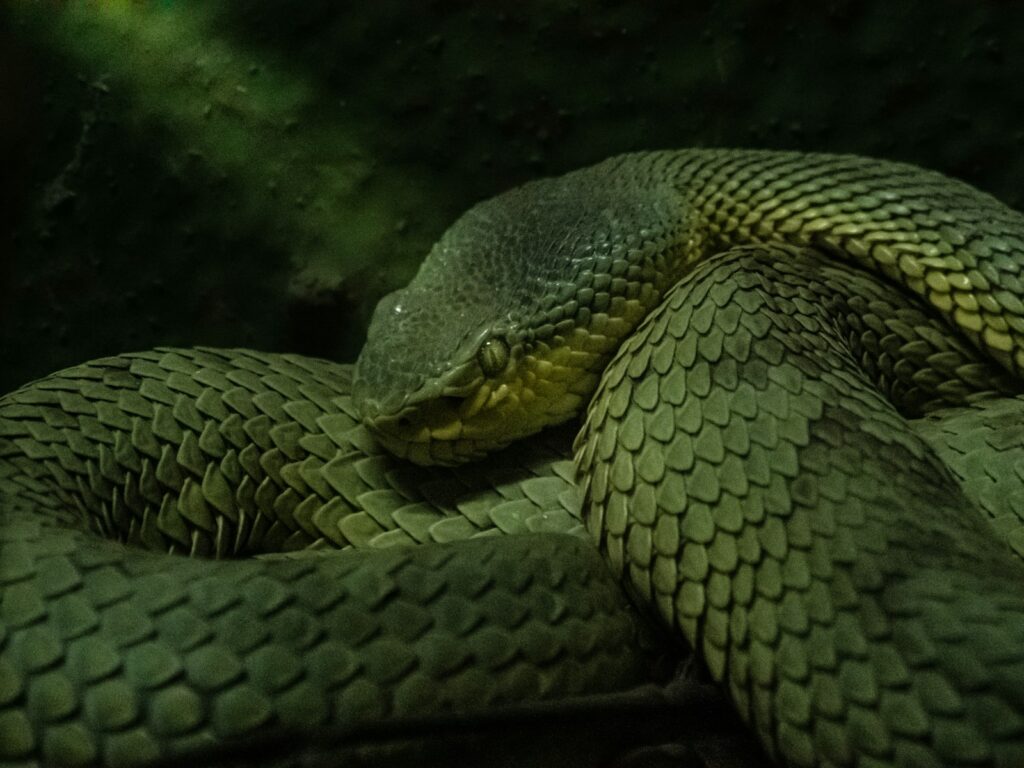
Death adders exhibit an unusual reproductive strategy among elapid snakes—they are ovoviviparous, meaning females retain eggs within their bodies until they hatch, then give birth to live young. This adaptation provides greater protection for developing offspring in variable environments and reduces predation risk during the vulnerable egg stage. Female death adders typically produce between 10-20 young in a single brood, with reproduction occurring every 2-3 years depending on environmental conditions and food availability. The young are born fully formed at approximately 20-30 centimeters in length, complete with functioning venom glands and hunting instincts. Unlike many reptile species, death adders provide no parental care after birth, and the juveniles must immediately fend for themselves. Their survival rate is relatively low, with predation, environmental challenges, and competition for resources resulting in significant mortality during the first year of life.
Encounters with Humans
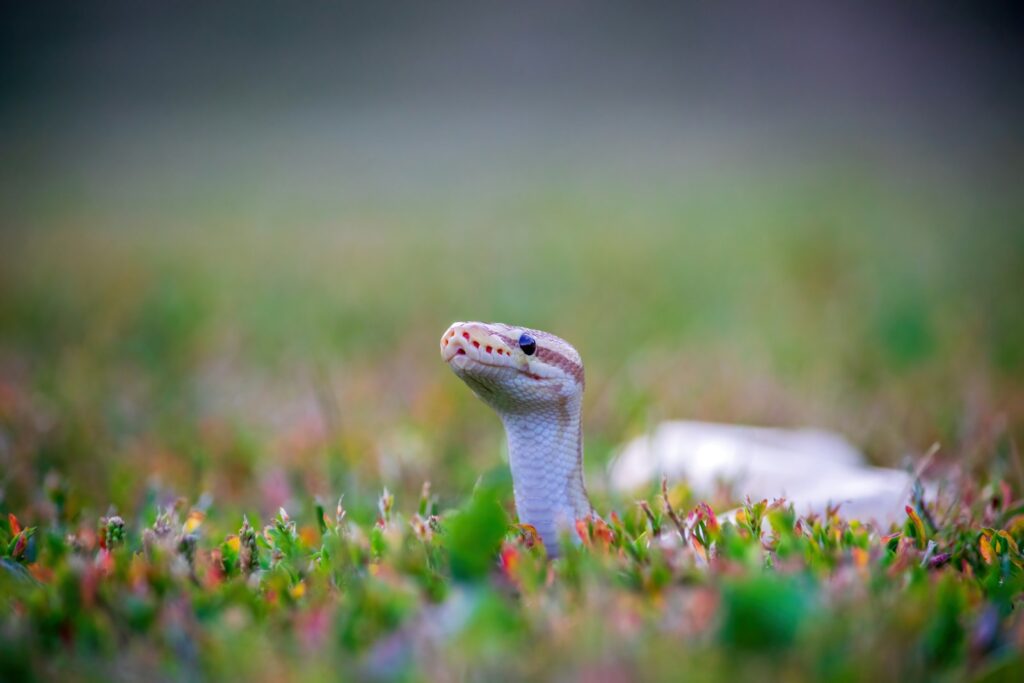
The death adder’s exceptional camouflage and tendency to remain motionless rather than flee when disturbed make human encounters particularly dangerous. Many bites occur when people accidentally step on or near these well-disguised snakes, which perceive the human as a threat and strike defensively. Bush walkers, hikers, and agricultural workers in rural Australia and Papua New Guinea are at highest risk, particularly when moving through leaf litter or dense vegetation without proper protective footwear. Unlike many other venomous snakes that give warning signals before striking, death adders rarely provide any indication of their presence until after they’ve delivered venom. Their preference for remaining still rather than retreating when humans approach further increases the risk of accidental encounters. Australian snake experts emphasize that a significant percentage of death adder bites occur within a meter of shelter or human habitation, highlighting the importance of vigilance in areas where these snakes are known to exist.
Medical Importance and Antivenom Development
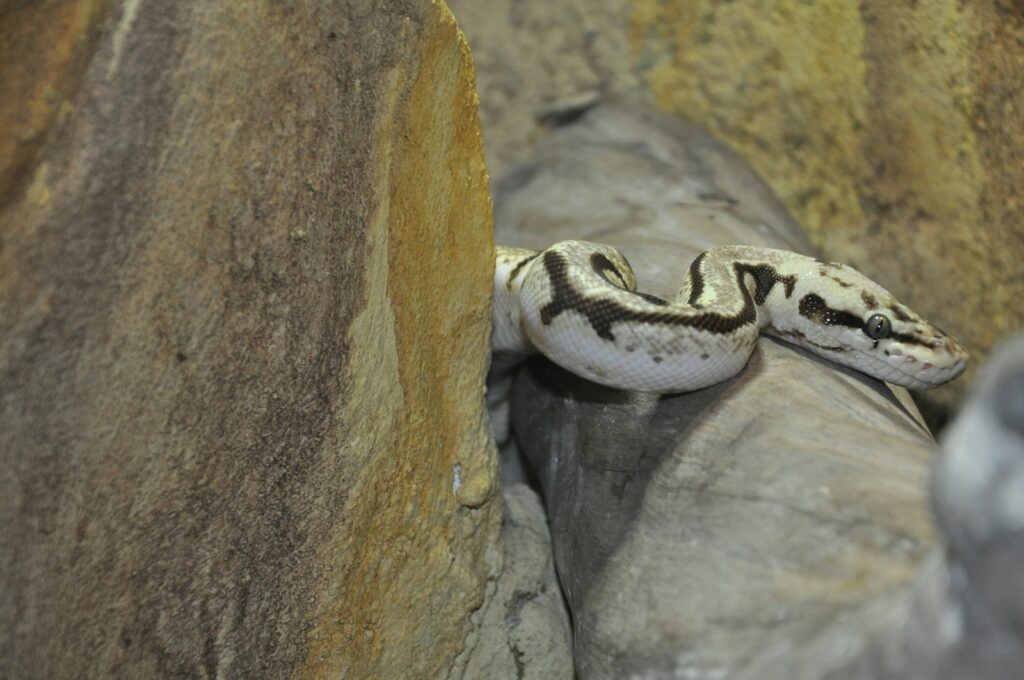
Death adder envenomation constitutes a true medical emergency requiring immediate professional intervention. Symptoms typically begin within 30 minutes of a bite and include local pain, progressive paralysis beginning in the extremities, ptosis (drooping eyelids), difficulty swallowing, and eventually respiratory compromise if left untreated. Before the development of effective antivenoms in the 1950s, death adder bites carried mortality rates between 50-60%, making them one of Australia’s most dangerous snakes. Today, thanks to the Commonwealth Serum Laboratories’ polyvalent and monovalent antivenoms, deaths from properly treated bites have become extremely rare. The current recommended treatment protocol involves pressure-immobilization of the affected limb to slow venom spread, followed by prompt transportation to a medical facility where antivenom can be administered. Medical monitoring often continues for 24-48 hours after antivenom treatment to ensure complete resolution of symptoms and to watch for potential delayed reactions or complications.
Conservation Status and Threats
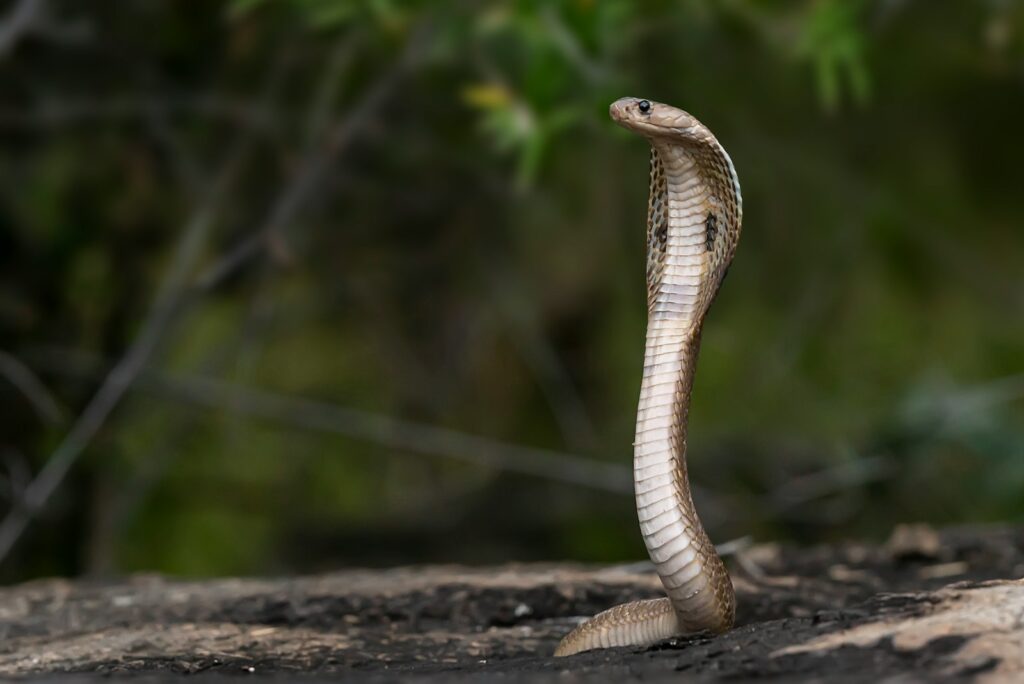
Several death adder species face significant conservation challenges in the modern world, with habitat destruction representing their primary threat. Agricultural expansion, urban development, and mining activities continue to fragment and reduce their natural habitats throughout Australia and New Guinea. The introduction of invasive species has created additional pressures—particularly the cane toad (Rhinella marina), whose toxicity makes them lethal to death adders that attempt to prey on them. Climate change poses yet another challenge, potentially altering the temperature and rainfall patterns in their habitats and affecting prey availability. Currently, most death adder species are listed as Least Concern on the IUCN Red List, though specific populations face more immediate threats. The Barkly Tableland death adder (Acanthophis hawkei), for example, has been classified as Endangered due to its limited range and declining population trends in Australia’s Northern Territory.
Cultural Significance
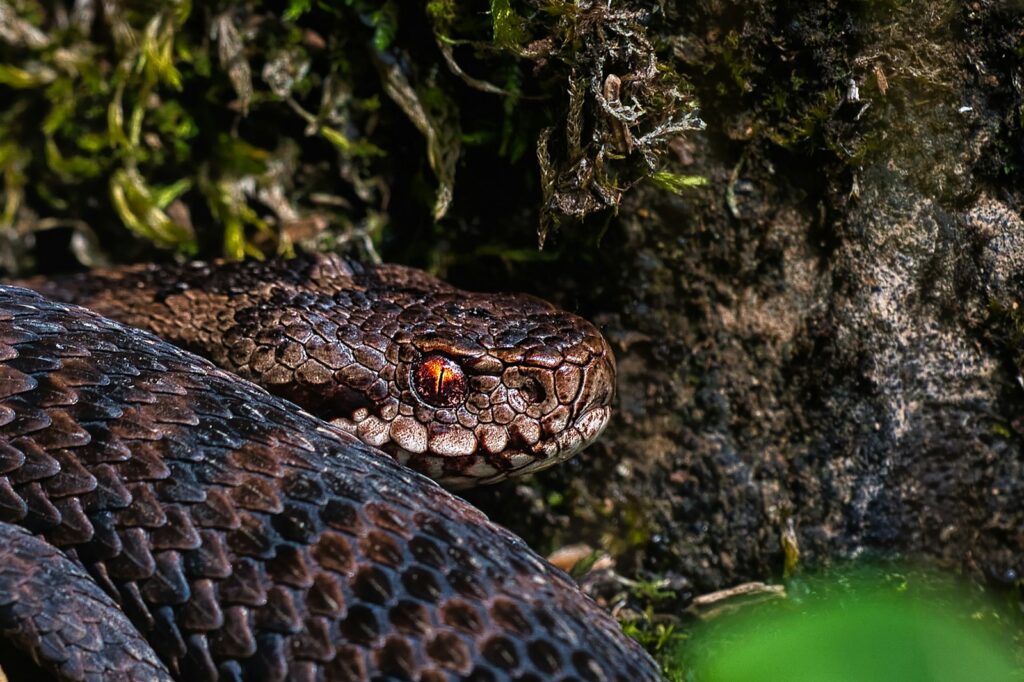
Death adders occupy a significant place in the cultural traditions and folklore of indigenous Australian and Papuan peoples, who recognized their dangerous nature long before European colonization. Many Aboriginal dreamtime stories feature these snakes as powerful and cunning characters, often associated with both creation narratives and cautionary tales. Indigenous knowledge includes sophisticated understanding of death adder habitats, behavior patterns, and traditional treatments for bites, reflecting thousands of years of coexistence with these dangerous reptiles. For early European settlers in Australia, encounters with death adders contributed significantly to the continent’s fearsome reputation for dangerous wildlife. The snake’s name itself—”death adder”—reflects the colonial perspective on its lethal potential, though it’s actually unrelated to true adders (Viperidae) found in Europe. Today, death adders remain prominent symbols in Australian wildlife conservation efforts and continue to fascinate both scientists and the general public with their remarkable adaptations.
Research and Scientific Importance
Beyond their ecological significance, death adders have contributed substantially to scientific research in fields ranging from evolutionary biology to pharmacology. Their specialized venom components have proven valuable in developing new pharmaceuticals, particularly potential treatments for pain, cardiovascular conditions, and neurological disorders. The snake’s remarkable sensory adaptations, including heat-sensitive pit organs that allow them to detect warm-blooded prey in complete darkness, provide insights into the evolution of specialized predatory mechanisms. Behavioral ecologists study their ambush hunting strategy as a model of evolutionary specialization, examining how extreme adaptations develop in response to specific ecological pressures. The genus also presents interesting biogeographical questions regarding how these specialized predators colonized and diversified across Australia and neighboring islands. Recent genomic studies of death adders have begun unraveling their complex evolutionary history and relationship to other elapid snakes, contributing to broader understanding of reptile evolution in the Australasian region.
Captive Husbandry and Study
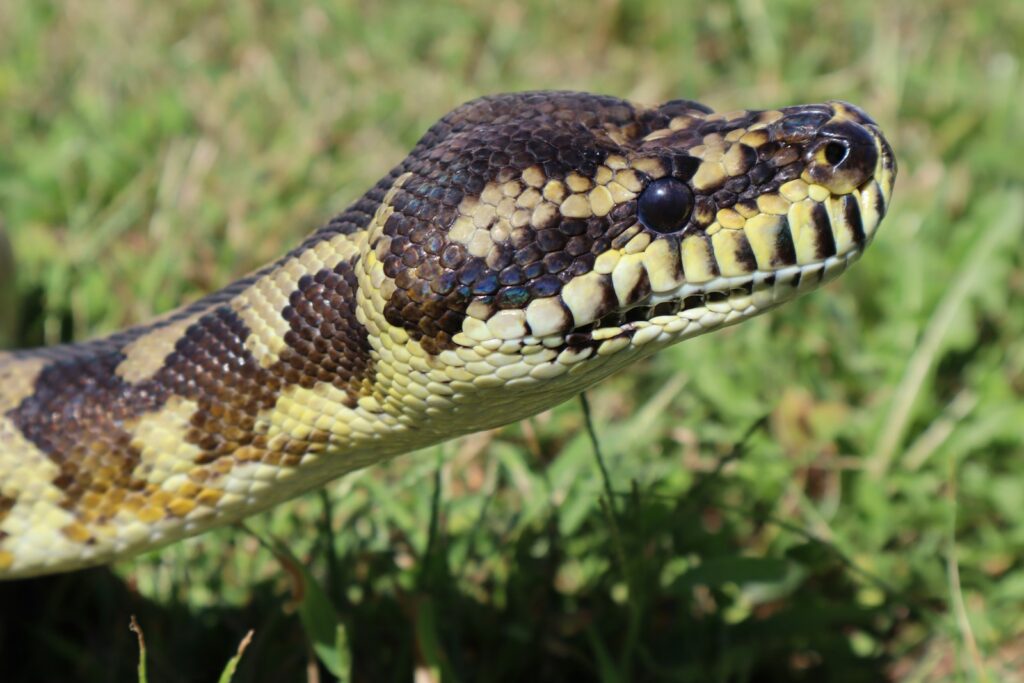
Professional herpetologists and specialized zoos maintain death adders in captivity for research, conservation, and educational purposes, though their specific care requirements make them unsuitable for casual pet ownership. Successful captive husbandry requires carefully controlled environments that mimic their natural habitats, including appropriate temperature gradients, humidity levels, and substrate types that allow for their natural burrowing behaviors. Their specialized dietary needs present another challenge—death adders primarily consume small mammals, birds, and reptiles in the wild, and maintaining appropriate prey sources requires considerable resources. Breeding programs for captive death adders have achieved notable successes, particularly for species facing conservation challenges, though reproductive difficulties remain more common than with many other snake species. These captive collections serve crucial roles in antivenom production, providing the venom samples necessary for developing and testing life-saving treatments. Additionally, they offer opportunities for public education about these misunderstood predators and their ecological importance, helping to transform fear into appreciation for these remarkable evolutionary specialists.
Conclusion
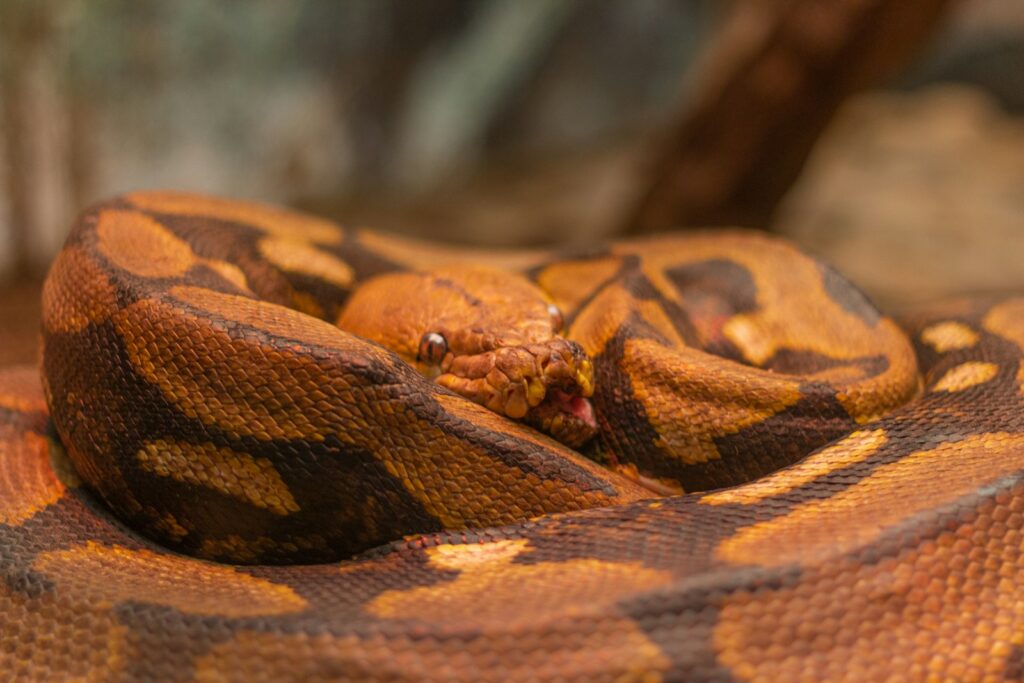
The death adder represents one of nature’s most perfect deceptions—a deadly predator disguised as a harmless bystander. Its remarkable adaptations for ambush hunting, lightning-fast strikes, and potent venom make it a formidable predator despite its relatively small size. While human encounters with death adders can be dangerous, modern medical treatments have dramatically reduced fatalities. As with many wildlife species, the greatest threat to death adders comes not from their interactions with humans but from habitat destruction and environmental changes that disrupt their specialized ecological niche. Understanding these fascinating yet dangerous snakes contributes to both scientific knowledge and practical safety awareness in regions where they occur. The death adder’s evolutionary story reminds us that in nature, appearances can be deceiving, and sometimes the most unassuming creatures deserve our greatest respect and caution.

